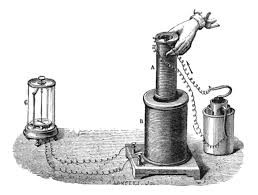Faraday's Law and Lenz's Law
Michael Faraday was a British-born physicist and chemist. In 1831, after conducting several experiments, he discovered electromagnetic induction. It was at this time that it was discovered that an electric field can be created from a varying magnetic field. It was this event that prompted Faraday's law and Lenz's law.
Faraday's law or also known as Faraday's law of electrolysis refers to the amount of mass that is proportional to some electricity.
Faraday's law states that the induced voltage across a coil is directly proportional to the rate at which the magnetic flux changes per unit time on a surface next to the circuit. At the moment the current is introduced, the magnetic field of the coil shows resistance to the change of flux. The negative sign of Faraday's law shows the direction of the induced current, also known as Lenz's law.
Next to Faraday's law, we find Lenz's law which, unlike Faraday's law, this law indicates the direction in which the current flows, as well as establishing the direction in which it creates resistance to change, in other words, the magnetic field produced by the induced current flows in the opposite direction to the field that was in the original field.
How is Faraday's and Lenz's law calculated?
As we have seen above, Faraday's law is based on the voltage which is represented by: EMF (Ɛ).
EMF (Ɛ) = N · (∆ϕ/∆t) ![]()
EMF (Ɛ) = voltage of the coil
N = number of turns of the coil
dΦ = change of magnetic flux
dt = time lapse (∆t à 0)
To obtain Lenz's law we only have to change the sign of the calculation to negative since, due to its definition, Lenz's law refers to resistance to the change in flux variation. So the formula to obtain the value of this resistance is:
VƐ = - N · (∆ϕ/∆t)
Applications in our everyday life
Faraday's law and Lenz's law have many applications. All applications that have a connection to electrical technology depend on them. In the same way, we can use the laws in everyday life in various ways such as in:











